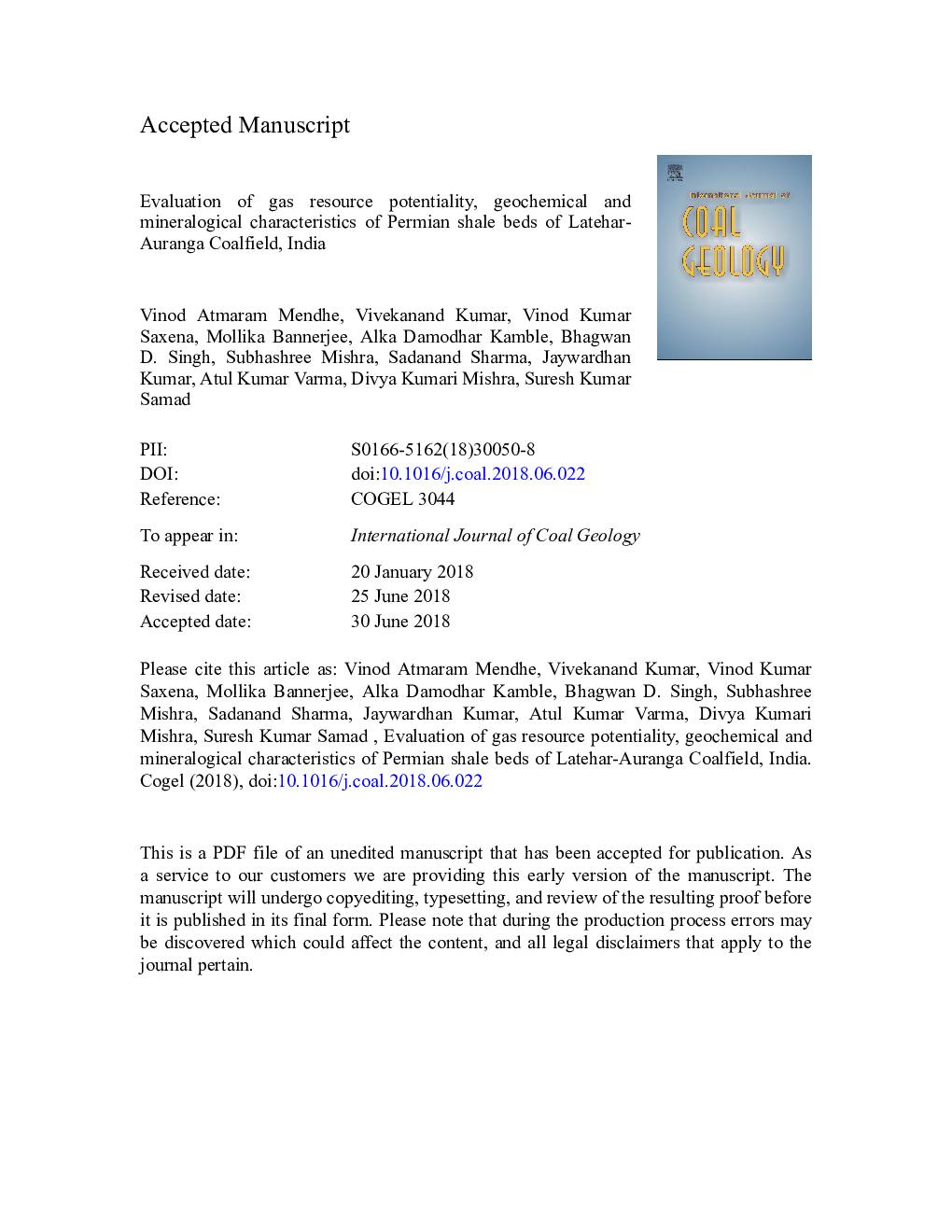| Article ID | Journal | Published Year | Pages | File Type |
|---|---|---|---|---|
| 8123274 | International Journal of Coal Geology | 2018 | 52 Pages |
Abstract
The plots of hydrogen index (39.54-821.45â¯mg HC/g TOC) with calculated VRo (0.29-1.05%) and Tmax (414-456â¯Â°C) are signifying types I, II, III and IV kerogen in the shales prone to generate oil, wet and dry gas placed in immature to mature regions. The positive linear correlation of the VL with kaolinite and illite contents suggests that mainly clays contribute to the formation of shale matrix. The SEM images show six types of pore: i) lenticular open pores along the fissility, ii) altered pores due to weathering, iii) intergranular pores, iv) intermingled pores between crystal lattices, v) partially filled pores associated with clays and minerals, and vi) evolved pores by cracking of the organic compounds. The values of porosity and permeability have been measured under reservoir simulated confining pressure, and are ranging from 0.87-8.18% and 0.08-1.45â¯mD, respectively. This shows poor connectivity between the pores and fracture mechanisms controlled by the clay and minerals. It is summarized that the studied shales of Latehar-Auranga Coalfield have a low to moderate gas potential, based on their in-situ gas, TOC content (1.28-16.26â¯wt%), sorption capacity, Tmax values and thermal maturity. Moreover, the significant residual volume, low porosity and low permeability are the most critical properties for shale gas resource development at the Latehar-Auranga coalfield.
Related Topics
Physical Sciences and Engineering
Earth and Planetary Sciences
Economic Geology
Authors
Vinod Atmaram Mendhe, Vivekanand Kumar, Vinod Kumar Saxena, Mollika Bannerjee, Alka Damodhar Kamble, Bhagwan D. Singh, Subhashree Mishra, Sadanand Sharma, Jaywardhan Kumar, Atul Kumar Varma, Divya Kumari Mishra, Suresh Kumar Samad,
